
How to pair Berberis?
6 ideas for garden companions
Contents
Berberis are charming spiny bushes, decorative, hardy, easy to grow, and requiring no maintenance. There are many varieties that offer shapes and sizes suitable for all uses in the garden. The cultivars with deciduous foliage come in shades of pink, purple, or tricolour, with discreet small flowerings. In contrast, the varieties with evergreen foliage provide an abundant display of yellow, fragrant, melliferous flowers. Also known as “barberry,” they are perfect for a defensive hedge, in a shrub border, along a bank, in a rockery, or even in a container on a terrace or balcony. Discover our 6 ideas for combining Berberis in the garden.
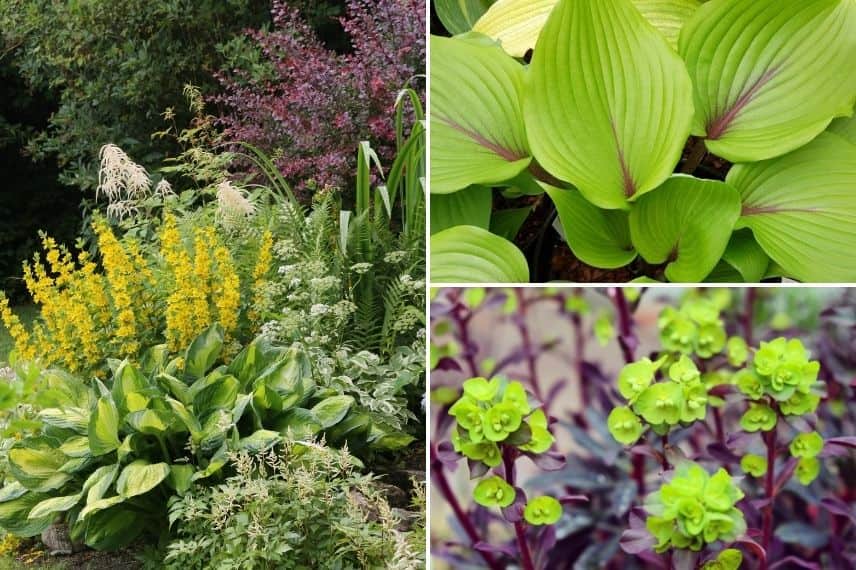
On the left: Berberis thunbergii, Aruncus dioicus, Fern, Lysimachia punctata, Hosta ‘Amalia’, Astilbe simplicifolia ‘Hennie Graafland’. On the right: Hosta Almost and Euphorbia amygdaloides purpurea
In a defensive hedge
With their dense and thorny habit, Berberis are perfect for creating defensive hedges, whether free-standing or trimmed. If you desire a screening or windbreak effect, opt for varieties with evergreen foliage.
To plant a low hedge, choose small specimens, such as the Berberis Darwinii ‘Nana’ or the cultivar ‘Orange Dream’.
In a medium hedge, plant intermediate-sized bushes, such as Berberis thunbergii alongside an Ulex Europaeus, or a Pyracantha ‘Sparkler’ with its lovely variegated foliage.
In a tall hedge, install larger varieties such as Berberis julianae alongside Pyracantha.
In each of these configurations, you can combine them with beautiful rugosa roses, Japanese quinces, a Mahonia, Holly, a Grevillea Rosmarinifolia, and a Poncirus Trifoliata with its beautiful white flowers that have fragrant citrus notes. Note that in addition to being decorative, the small berries of Berberis and other shrubs will feed birds during winter.

Berberis ‘julianae’, Berberis ‘darwinii’, Common holly aquifolium ‘JC Van Tol’, Common holly, and Mahonia aquifolium in the centre
Read also
When and how to prune barberry?In a bush bed
With purple, pink, green, or golden foliage, Berberis will add a stunning splash of colour to a bush rank. You can place larger specimens at the back of the rank, such as Berberis thunbergii ‘Red Rocket’, or shorter varieties at the front like Berberis thunbergii ‘Bagatelle’ with its small purple leaves.
They can be paired with flowering bushes such as Deutzia, Forsythia, Escallonia, Lilac, Lagerstroemia, and Abelia with white flowers. You can also plant a landscape shrub rose or English rose and a Kolkwitzia. This will ensure your garden is in bloom throughout the seasons! Don’t forget a Cotinus with purple hues or a Physocarpus.
To echo the red tones of the Berberis, you can plant nearby a Broom ‘Boskoop Ruby’ or Broom ‘Lena’ and a Japanese Quince. You can place Heucheras, Alchemillas, Hostas, ferns, and beautiful Astilbes at the front.
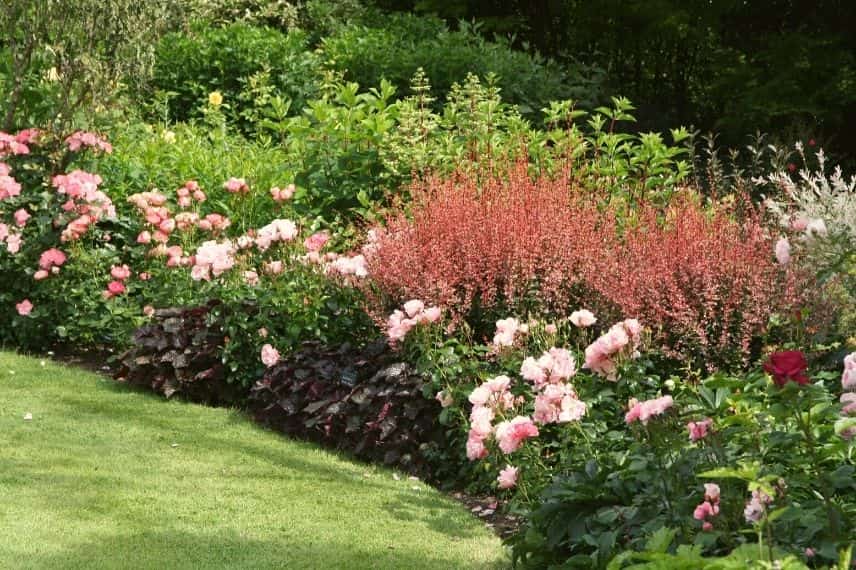
This Berberis adds a lovely touch of colour to this bush rank
Discover other Berberis - Barberries
View all →Available in 2 sizes
Available in 1 sizes
Available in 2 sizes
Available in 1 sizes
Available in 1 sizes
Available in 1 sizes
Available in 3 sizes
Available in 1 sizes
Available in 1 sizes
Available in 3 sizes
On the edge
Thanks to their bushy and compact habit, small Berberis will thrive at the edge, such as the cultivar ‘Bagatelle’ with purple leaves or ‘Tiny Gold’ with bright light green and golden foliage. For successful planting, you can install groundcover roses, a Nandina ‘Fire Power’, and a St John’s Wort ‘Radiance’. You can alternate with lovely boxwoods, heathers, and a Lonicera. For a perfect scene, you can plant a Japanese Maple in acidic soil or a Physocarpus.
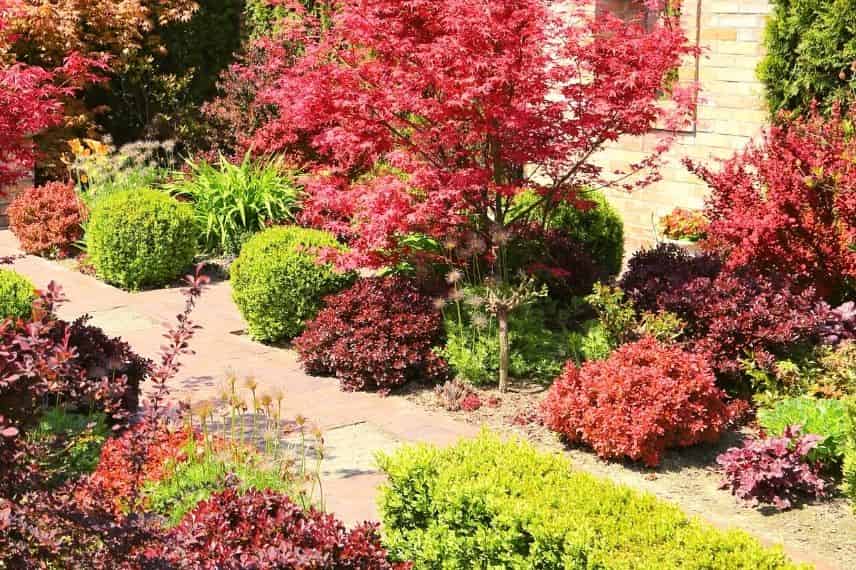
A lovely alternation of purple Berberis and boxwood looks wonderful at the edge of a flowerbed
On a slope with groundcover
To cover a bank, nothing beats incorporating compact Berberis that will serve as groundcover. Such as Berberis ‘Bagatelle’, which forms a lovely purple bush, or the cultivar Darwinii ‘Nana’ with its glossy green foliage, and ‘Green Carpet’, which will bring brightness with its golden-green hues. They will pair easily with Cotoneasters, a St John’s Wort ‘Radiance’, heathers, and a Lonicera. To add variety, you can also plant a creeping Euonymus, groundcover roses for beautiful flowering and a splash of colour, or a Deutzia ‘Yuki Snowflake’. If you appreciate conifers, you can install a dwarf Balsam Fir, a Chamaecyparis ‘Filifera Nana’, Junipers, and a White Spruce.
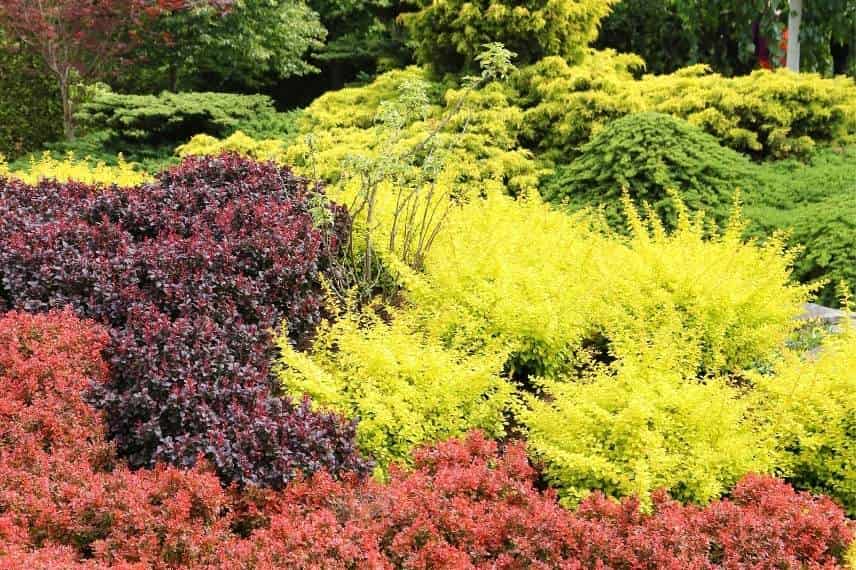
Berberis as groundcover
In a container on a terrace or balcony
Did you know that Berberis are perfectly suited for pot or container cultivation? Most of these shrubs are usually very prickly, so it’s better to choose a less spiny variety to avoid any discomfort on the terrace or balcony. Consider Berberis buxifolia ‘Nana’, which has few thorns, as well as the cultivar thunbergii ‘Atropurpurea Nana’, ‘Golden Carpet’, or ‘Green Carpet’, the tiny ‘Tiny Gold’ with its bright foliage, and the charming little red ball of thunbergii ‘Lutin Rouge’.
For a beautiful effect, pair them with perennial plants, varying the shapes and colours of the foliage, such as Alchemilla, hardy geraniums, and bright Hostas for a lovely contrast. To echo the shades of Berberis, you can add Heucheras and a Euphorbia griffithii ‘Fireglow’. Surround it with trailing plants like Campanula, an Erigeron karvinskianus, or a Lysimachia ‘Goldilocks’.
In a rockery
With its dense and compact habit, Berberis will make a statement in a sunny or partially shaded rockery, particularly the ‘Thunbergii’ species. Opt for small varieties that will form delightful little cushions, such as ‘Tiny Gold’ with its beautiful green foliage and golden highlights, or Berberis thunbergii ‘Inspiration’ whose young purple foliage is marbled with pink. Once well-established, they will easily withstand summer drought in most of our regions, except along the Mediterranean coast.
To accompany them, you can plant rock garden perennials such as Fleabane, Asters, Arabis, Sedums, and a spurge. For a combination of gold and purple, you could pair a Euphorbia amygdaloides ‘purpurea’, a Gaillardia ‘Kobold’, or a Coreopsis ‘Cosmic Eye’ with a Sedum ‘Chocolate Cherry’. You can also install some conifers like a creeping Juniper, a white spruce, and small Canadian Thuyas or a dwarf fir (Abies).

A beautiful rockery featuring Berberis thunbergii ‘Lutin Rouge’, Sedum reflexum ‘Blue Spruce’, Juniperus communis ‘Green Carpet’, Thuja occidentalis ‘Golden Globe’, and an Arabis.
For further reading
- Discover our article to learn all about Berberis, thorny barberry: planting, pruning, and maintaining.
- Subscribe!
- Contents
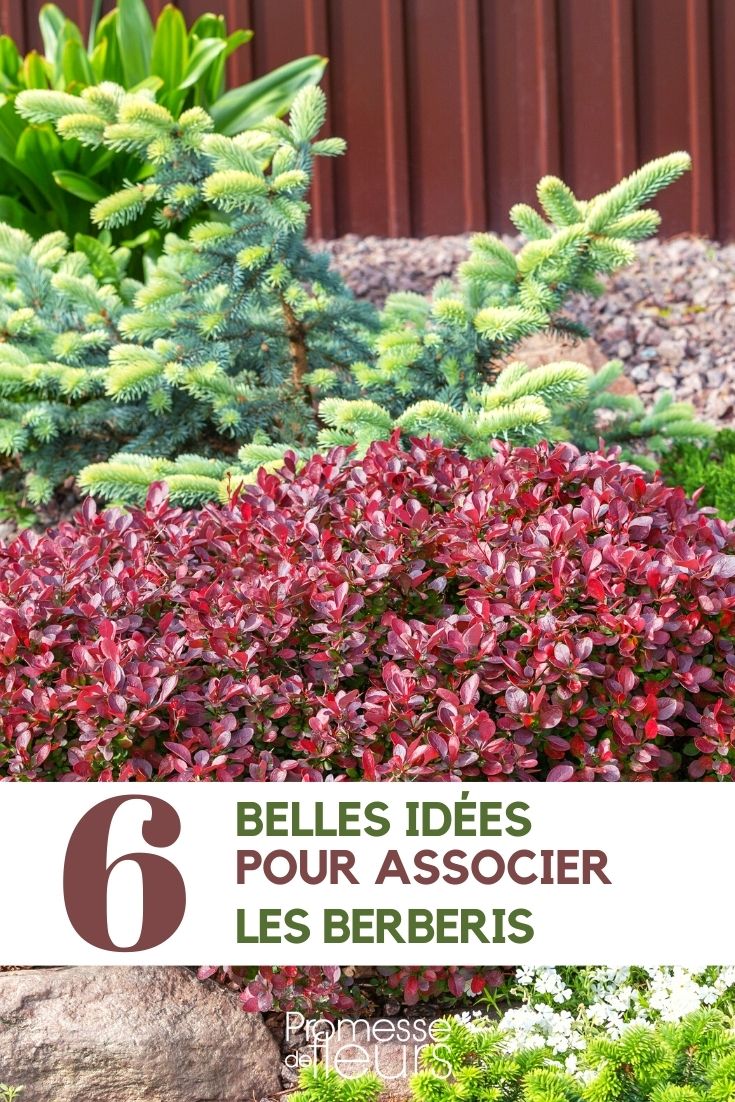































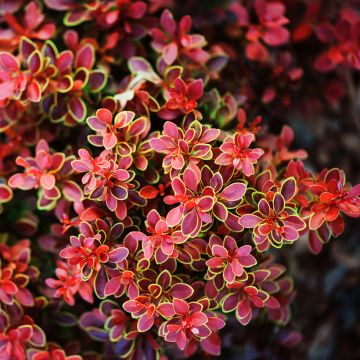

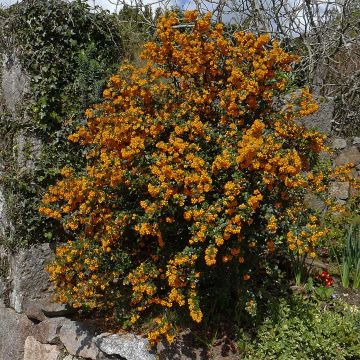

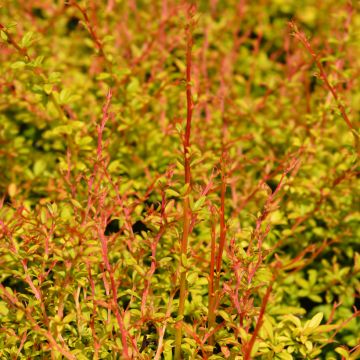
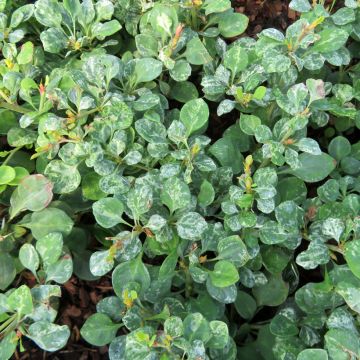
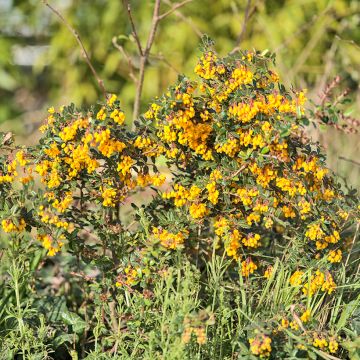

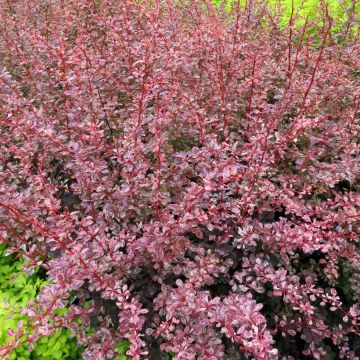
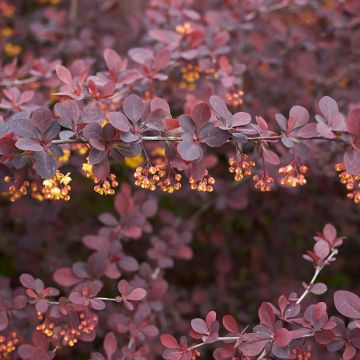
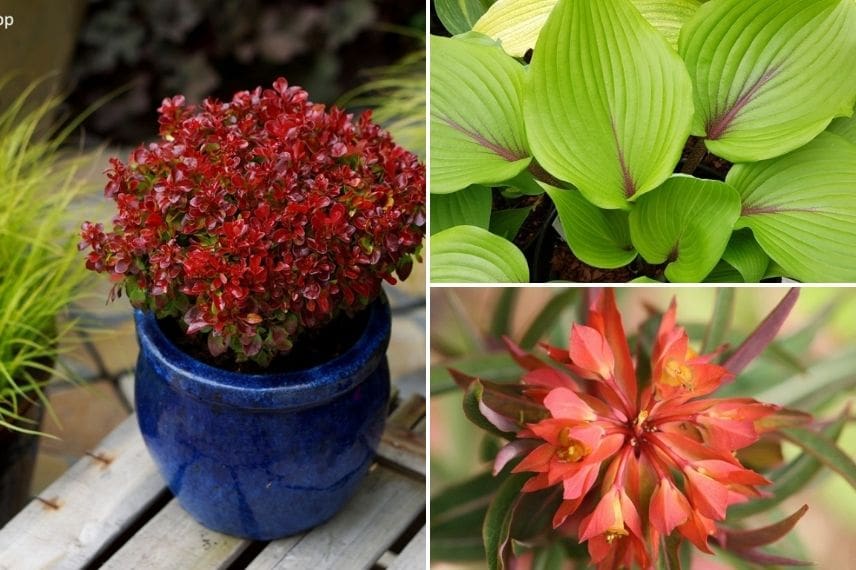
Comments